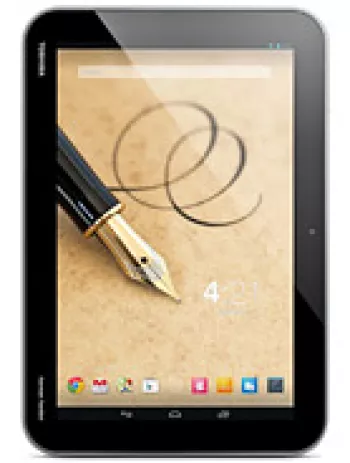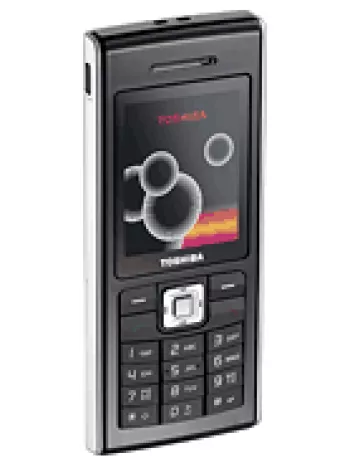
Toshiba G500 Overview
The Toshiba G500 is a mobile device that was announced in 2007, February. It represents an era of early smartphones, featuring the Microsoft Windows Mobile 5.0 operating system. Designed to serve professionals and gadget enthusiasts alike, the G500 offers a range of impressive features for its time, blended into a compact form factor.
Design and Build
At first glance, the Toshiba G500 has a compact design with its dimensions measuring 96 x 49 x 22.9 mm (3.78 x 1.93 x 0.90 in) and weighs 135 g (4.76 oz). It offers a solid build in a silver finish which gives it a sleek and professional look. The device uses a Mini-SIM and provides a sense of sturdiness, fitting comfortably in the palm and pocket.
Display
The G500 is equipped with a 2.3-inch TFT screen that offers 65K colors, giving it a vibrant display for its time. The resolution of 240 x 320 pixels ensures that while it isn't HD by modern standards, it delivers a clear and reasonably sharp display experience. Sporting a 4:3 aspect ratio, the approximately 174 ppi pixel density offers readability and clarity in its user interface.
Performance and Platform
Powered by a 32-bit Intel XScale PXA270 312 MHz processor, the Toshiba G500 provides adequate performance for running the applications available on the Microsoft Windows Mobile 5.0 OS. Though not comparable to today’s mobile processors, it was competent for basic tasks like emailing, browsing with Opera 8.6, and managing personal information.
Memory and Storage
This device contains 64MB of internal storage, a modest amount by current standards but acceptable for its launch period. For those needing more space, there is a miniSD slot that allows for expandable storage. This feature provides users the flexibility to store additional data, applications, and media files.
Camera Capabilities
Featuring a 2 MP main camera, the Toshiba G500 allows users to capture basic still photography. The device includes video recording capabilities, though at a fundamental level. A VGA videocall camera is included for video calls, giving users a complete multimedia experience, even if the quality is far from today's expectations.
Sound and Multimedia
The device includes a loudspeaker system and offers vibration and MP3 ringtones for alerts. However, it lacks a 3.5mm jack, a limitation for those looking to connect standard headphones without adapters or wireless solutions. Multimedia experience is somewhat basic, typically serving for ringtone playback and basic alert tones.
Connectivity and Communication
The G500 offers a range of connectivity options during its time, including Wi-Fi 802.11b/g for wireless internet, although there's no support for GPS. It supports Bluetooth 2.0 with A2DP for wireless audio streaming. The USB connectivity is limited to miniUSB 1.1, which allows for basic data transfer needs. Although it doesn't include a radio, the VoIP over WLAN feature offers options for internet-based calling.
Battery Life
The Toshiba G500 runs on a removable Li-Ion 1200 mAh battery, which provides up to 240 hours of stand-by time and offers a talk time of up to 4 hours on 2G networks and up to 3 hours on 3G networks. This battery performance was satisfactory for typical usage patterns during the product's introduction.
Additional Features
One of the standout features of the G500 is its rear-mounted fingerprint sensor, an advanced security feature during the device's time. This feature allows users to unlock their device with a fingerprint, providing enhanced security compared to traditional PINs or patterns. The browser supports WAP 2.0/xHTML and HTML browsing, ensuring users had access to web services.
Network Specifications
The Toshiba G500 supports GSM and HSDPA technology, making it compatible with 2G bands (GSM 900/1800/1900) and 3G bands (HSDPA 2100). It offers HSPA speeds of 3.6 Mbps for download and 0.384 Mbps for upload, allowing reasonable efficiency for early mobile internet browsing and communication.
Miscellaneous Information
Upon its release, the Toshiba G500 was priced at approximately 260 EUR, positioning it in a competitive segment. It carried a specific SAR value of 0.22 W/kg (head) and 1.44 W/kg (body), ensuring compliance with safety standards for mobile devices.
Conclusion
Overall, the Toshiba G500 was a device that showcased several advanced features for its time, particularly with its early adoption of a fingerprint sensor and enterprise-focused Windows Mobile OS. While it may seem modest compared to today's smartphones, it provided a balanced array of features catering to both personal and professional users in its era. As a part of the broader evolution of mobile phones, the G500 holds a place in the timeline of transitional technology from feature phones to modern smartphones.
Key Features of Toshiba G500
- Network Technology: Supports GSM / HSPA for versatile connectivity
- Compact Design: Dimensions of 96 x 49 x 22.9 mm and weight of 135 g
- Display: 2.3-inch TFT screen with 65K colors and a resolution of 240 x 320 pixels
- Operating System: Runs on Microsoft Windows Mobile 5.0
- Processor: Powered by 32-bit Intel XScale PXA270 312 MHz CPU
- Expandable Storage: MiniSD card slot for additional storage
- Main Camera: 2 MP camera with video capabilities
- Connectivity: Wi-Fi 802.11b/g and Bluetooth 2.0 with A2DP support
- Fingerprint Sensor: Rear-mounted fingerprint sensor for enhanced security
- Battery: Removable Li-Ion 1200 mAh battery with up to 240h standby
Disadvantages of Toshiba G500
- Outdated Network Technology: Only supports GSM / HSPA, no support for newer technologies like 4G or 5G.
- Heavy and Bulky: Weighs 135 g and has a thickness of 22.9 mm, making it less portable.
- Low Screen-to-Body Ratio: 2.3-inch display occupies only ~34.8% of the device's body.
- Limited Internal Memory: Only 64MB of internal storage, insufficient for modern apps and media.
- Old Operating System: Runs on Microsoft Windows Mobile 5.0, which is outdated.
- Low-Resolution Cameras: Main camera is 2 MP and selfie camera is VGA, not suitable for high-quality photos.
- No 3.5mm Audio Jack: Lack of standard headphone jack can be inconvenient for audio listening.
- No Built-in GPS: Absence of positioning feature limits navigation capabilities.
- Lacks Radio Feature: No FM radio support, reducing entertainment options.
- Short Battery Life: Limited talk time up to 4 hours (2G) / 3 hours (3G).
- MiniUSB 1.1: Slower data transfer speeds compared to modern USB standards.

View Also
More Phones
All Rights Reserved +13665 Phones © Mobilawy 2025

























